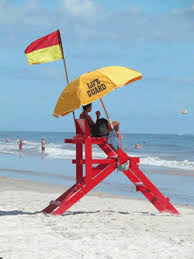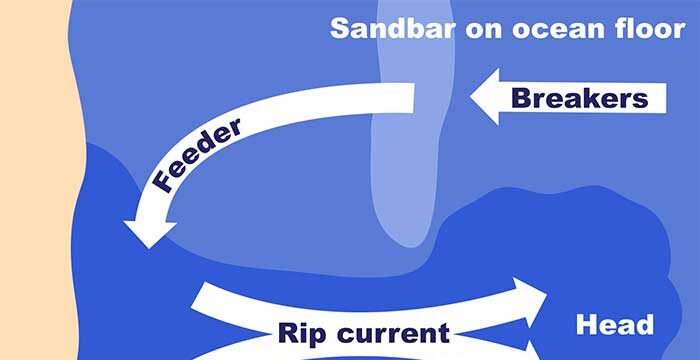 Beach Safety Tips
Beach Safety Tips
As summer heats up, and families head to the beach, it is important to understand and respect the power of the ocean. What seems like an idyllic setting on the surface – sun shining, waves crashing, kids splashing – can sometimes be very dangerous just below the surface. Anyone can get in trouble beach. Whether you are a beach going newbie or a salty beach veteran, the best way to stay safe is to follow these beach safety tips.
When you are at the beach
- Whenever possible, swim at a lifeguard-protected beach.
- Never swim alone.
- Learn how to swim in the surf. It’s not the same as swimming in a pool or lake.
- Obey all instructions and orders from lifeguards. Lifeguards are trained to identify potential hazards. Ask a lifeguard about the conditions before entering the water.
- Stay at least 100 feet away from piers and jetties. Permanent rip currents often exist alongside these structures.
- Use polarized sunglasses when at the beach. They will help you to spot signatures of rip currents by cutting down glare and reflected sunlight off the ocean’s surface.
- Pay especially close attention to children and elderly when at the beach. Even in shallow water, wave action can cause loss of footing.
- Have young children or inexperienced swimmers wear U.S. Coast Guard-approved life jackets in and the around water.
- Don’t dive headfirst—protect your neck.
- Water plants and animals may be dangerous. Avoid patches of plants and leave animals alone.
Rip Currents
Rip currents can form in any large open water area, such as low spots and breaks in sandbars, or near structures such as jetties and piers. When at the beach, check conditions before entering the water. Check to see if any warning flags are up or ask a lifeguard about water conditions, beach conditions, or any potential hazards.
If you are caught in a rip current:
Stay calm and don’t fight the current.
Think of it like a treadmill that cannot be turned off, which you need to step to the side of.
- Swim out of the current in a direction following the shoreline. When out of the current, swim at an angle–away from the current–towards shore.
- If you can’t swim to the shore, float or tread water until you are free of the rip current and then head toward shore.
- If you feel you can’t make it to the shore, draw attention to yourself by waving and calling for help.
- Stay at least 100 feet away from piers and jetties. Permanent rip currents often exist near these structures.
If you see someone in trouble, don’t become a victim, too:
- Get help from a lifeguard.
- If a lifeguard is not available, have someone call 911.
- Throw the rip current victim something that floats–a lifejacket, a cooler, an inflatable ball.
- Yell instructions on how to escape.
- Remember, many people drown while trying to save someone else from a rip current.
Know the Beach Flag Warning System
Red – most serious warning, indicates high surf and dangerous currents.
1 red flag means you can still swim, but you must use extreme caution and only go in if you are a strong swimmer.
2 red flags mean the conditions are so dangerous the beach is closed to swimmers.
Yellow – means the conditions are rough, but not life-threatening. If you swim with the yellow flag, use caution, wear a lifejacket and stay close to the lifeguard stands.
Green – means all clear and the beach is open to swimmers. Even with a green flag, swimmers should still use caution and keep a close eye on children.
Purple/Blue – means dangerous marine life is in the area. Sometimes beaches are still open, even though dangerous marine life may be in the area. Swimmers are advised to use caution and keep an eye out for jellyfish or sharks.
Matt Casey and Matt Devoti wish everyone a fun and safe Memorial Day Weekend.
Casey & Devoti is a St. Louis-based personal injury law firm. Together, Matt Casey and Matt Devoti have nearly 40 years of trial experience. They handle a variety of personal injury cases, including: car, truck and train accidents, medical malpractice and birth injuries, product liability, slips/trips/falls, elder care and sexual abuse, Workers’ Compensation, and wrongful death. If you or a loved one has been injured by the negligence of another, contact our office for a free, no-obligation consultation: (314) 421-0763.









